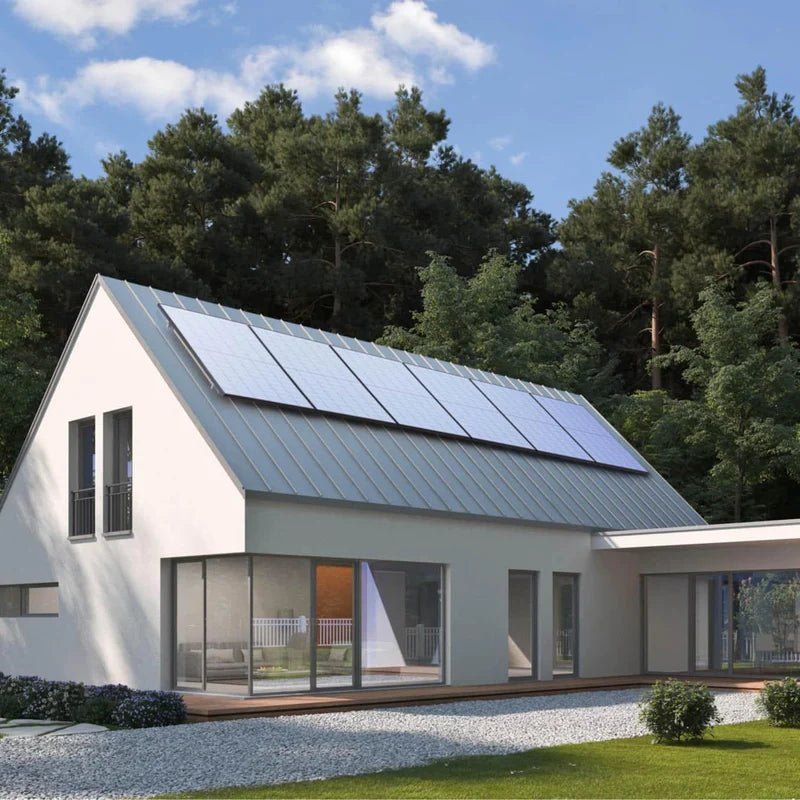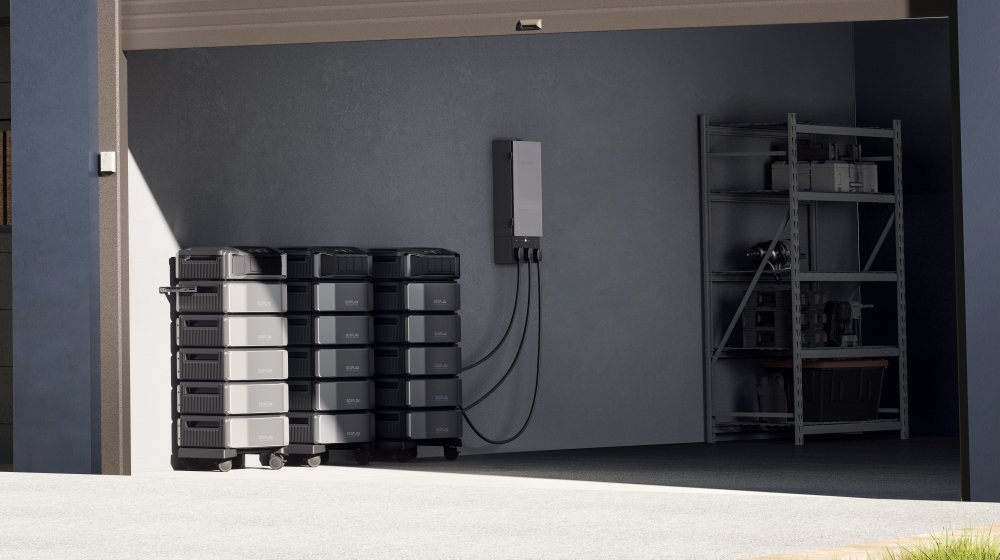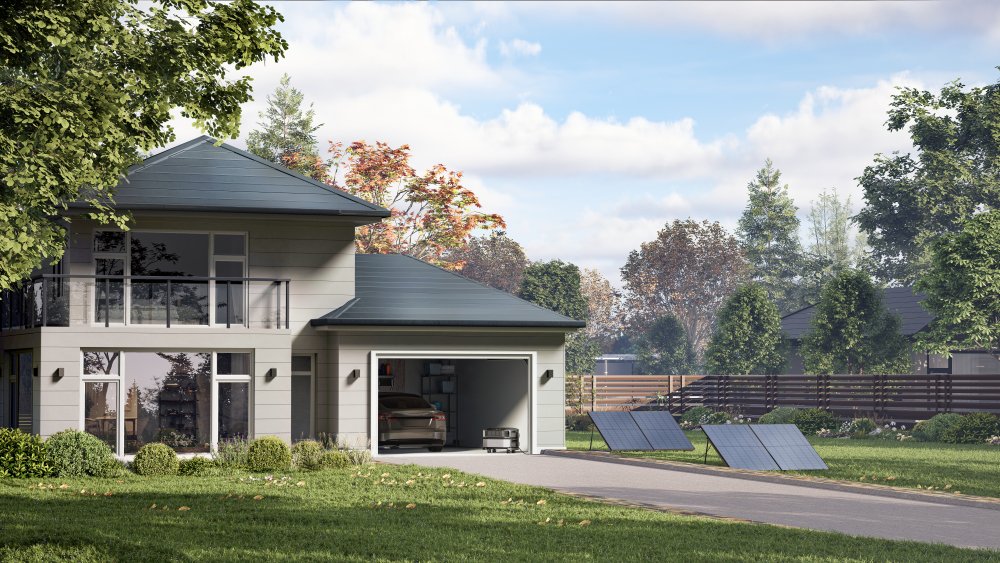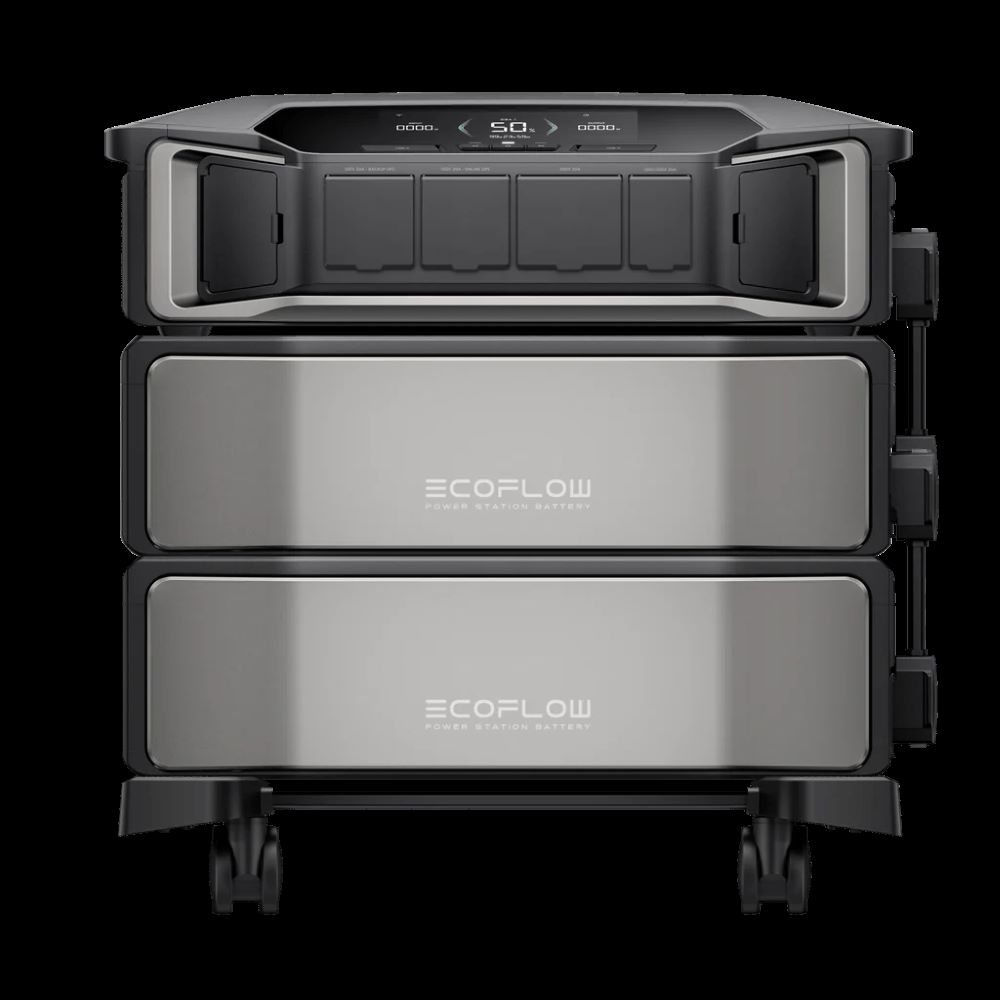
Homeowners are turning to solar power as a reliable and eco-friendly energy source. Solar panels are a well-known solution, but what about taking it a step further with high-capacity solar-powered battery storage systems like the new EcoFlow Delta Pro Ultra? In this guide, we'll explore the potential of low-voltage and high-voltage solar panels combined with different battery capacities, catering to the energy needs of a typical single-family home with moderate energy consumption. Are you ready to take control with the freedom of power independence? Let’s go!
Solar Panels: Low Voltage vs. High Voltage
Before we dive into battery storage, let's quickly address the two main types of solar panels: low voltage and high voltage.
Low Voltage Panels: These are versatile and suitable for small to medium-sized installations. They're perfect for homes with limited roof space or shading issues.
Low-voltage panels are also cost-effective and easier to install.
EcoFlow’s 100W Rigid Solar Panels are an excellent choice at around $249 for a set of two, including mounting feet. Or, EcoFlow’s 400W Rigid Solar Panels come in at around $999 for a set of two, including mounting feet.
High Voltage Panels: Designed for larger installations, high-voltage panels are ideal for spacious rooftops. They maximize energy production and are more efficient in converting sunlight into electricity.
Although the initial investment may be higher, the long-term benefits are substantial.
Running solar panels in a series creates greater voltage. Here is the formula to calculate voltage based on amps and wattage:
The relationship between power (in watts), voltage (in volts), and current (in amps) in an electrical circuit is given by the formula:
P = V x I
where:
- P is power in watts,
- V is voltage in volts, and
- I is current in amps.
To find the voltage (V) when you know the power (P) and current (I), you can rearrange the formula as follows:
V = P \ I
So, the formula to calculate voltage (V) is:
Voltage = Power \ Current
If you know the power (in watts) and current (in amps) of a solar panel, you can use this formula to determine the voltage. Keep in mind that this formula assumes a direct current (DC) system, which is common for solar panels.
It is important not to overload your solar generator past the maximum solar input. Voltage is the number you should adhere to so as not to damage your solar generator. Keep this in mind when putting different wattage solar panels into a series.
For a more portable solar panel option, EcoFlow has several portable solar panels from 110W-400W.

Pictured: EcoFlow 400W Rigid Solar Panels
Expandable High-Capacity Battery Storage with the Delta Pro Ultra (6kWh-90kWh):
Now, let's explore the high-capacity solar-powered battery storage systems, starting with the 6kWh capacity. It should be noted that every combination below, including the solar panels above, is eligible for the 30% Federal Solar Tax Credit and possible state tax incentives.
6kWh Battery Storage: Power for Essential Needs
Ideal for: Emergency backup and daily essentials
This compact powerhouse is perfect for ensuring your essential appliances continue running during power outages. Think of it as your energy safety net. It's also great for daily use, helping you optimize energy consumption during peak hours and reducing reliance on the grid. Want to take your 6kWh with you to the cabin or a camping adventure? No problem. The EcoFlow Trolley can make that happen.
Pictured: EcoFlow Delta Pro Ultra Inverter/Battery + 100W Solar Panels
12kWh Battery Storage: Sustained Power for a Night
Ideal for: Nighttime energy needs
With double the capacity, the 12kWh battery storage system extends your energy independence into the evening. It's fantastic for homes that experience frequent power fluctuations or for those looking to reduce their reliance on the grid during high-demand periods.
Pictured: EcoFlow Delta Pro Ultra Inverter + 2x Battery
18kWh Battery Storage: Supporting Daily Energy Consumption
Ideal for: Moderate daily energy consumption
This battery size is perfect for the average single-family home. It can power essential appliances and cover a significant portion of daily energy consumption. The 18kWh system is a balanced solution, providing reliability without excess capacity.
24kWh Battery Storage: Amplified Energy Independence
Ideal for: Moderate to high daily energy consumption
For larger households or those with higher energy demands, the 24kWh battery storage system ensures your home stays powered throughout the day. It's an excellent solution for reducing your carbon footprint and saving on electricity bills in the long run.
30kWh Battery Storage: Extensive Energy Autonomy
Ideal for: High daily energy consumption and larger homes
The 30kWh system is a robust choice for homes with above-average energy needs. It can handle larger appliances and a more extensive range of devices, providing substantial energy autonomy and reducing reliance on the grid significantly.
60kWh Battery Storage: Powering Your Entire Home
Ideal for: High daily energy consumption and energy-intensive lifestyles
If your home resembles a hub of activity with multiple electronic devices, appliances, and possibly an electric vehicle, the 60kWh battery storage system is the solution. It's a comprehensive choice that ensures you're covered, no matter how energy-intensive your lifestyle.
90kWh Battery Storage: Future-Proofing Your Energy Needs
Ideal for: Large homes, energy-intensive lifestyles, and future expansions
The 90kWh system is the pinnacle of solar-powered battery storage. It's designed for large homes with extensive energy needs. Paired with 16.8kW of high and low-voltage solar you have successfully achieved energy independence. This system is the epitome of energy self-sufficiency.

Pictured: EcoFlow Delta Pro Inverter (3x) + Battery (15x) + Smart Home Panel 2
Scalability of Delta Pro Ultra Output and Solar Inputs:
Generally, the Delta Pro Ultra Inverter has an output of 7200W and can be expanded up to 21,600W with 3x inverters.
If you are looking to increase your output to cover your energy needs the Delta Pro Inverter is highly expandable with different Delta Pro Ultra Battery setups. You can mix and match to your heart's content (up to 5 batteries per inverter though).
Each Inverter can handle 5,600W of solar input, with three inverters handling 16,800W of solar input. The wattage can be mix-and-matched between low-voltage and high-voltage solar panels.
More Ways to Charge:
The EcoFlow Delta Pro Ultra Inverter can be charged using a gas-powered generator, EV pile, AC outlet, solar panels, or a combination of AC and solar with EcoFlow's industry-defining Multicharge technology.
When charging your Delta Pro Ultra via AC, or if it is connected to the Smart Home Panel 2, the built-in output ports on the front of the unit will not power plugged-in devices.
How Can You Integrate the Delta Pro Ultra with Your Home Electrical System?
Easy. There are multiple ways to integrate the Delta Pro Ultra inverters into your electrical system: the EcoFlow Smart Home Panel 2, transfer switch, or inlet box.
Both the inlet box and transfer switch can accommodate 2 Delta Pro Inverters and 6-60kWh of capacity, with solar input capped at 11.2kW.
With the installation of the EcoFlow Smart Home Panel 2 up to 3 inverters and 90 kWh of capacity can be integrated into your home’s existing electrical system.
Installation requires a professional electrician, however, the cost of labor is also included in the dollar-for-dollar 30% Federal Solar Tax Credit.
The Smart Home Panel 2 is a massive upgrade to its predecessor, the Home Smart Panel. This new technology allows you to control your battery storage system via an app (required to operate the Smart Home Panel 2). You can download the app on your phone and/or use the all-new EcoFlow PowerInsight Home Energy Manager.

Smart Home Panel 2’s notable features:
- Auto-switch during an outage: No more spoiled food or damaged appliances with a UPS of 0ms. This is truly an uninterrupted power supply.
- Extended Backup Time: Circuit-level control with Circuit Control mode via the app can pause unnecessary loads.
- Emergency Weather Prep: The automatic Storm Warnings mode makes certain your batteries fully recharge 24 hours before an extreme weather event. This feature monitors the weather hourly, updating the system based on the predicted forecast. How cool is that!
For those who already have the EcoFlow Delta Pro ecosystem, no worries, the Smart Home Panel 2 is compatible if you want to upgrade your system with this cool piece of technology.
Again, this article is based on a single-family home with moderate energy consumption. Each household will have different energy consumption patterns and different appliances. If you are serious about home backup or whole home energy solutions, consult with a local electrician about your home energy needs. You can also purchase an Energy Watt Meter to help determine the energy consumption over time of your most energy-hungry appliances (as an Amazon Associate, I earn from qualifying purchases).
The combination of high-capacity solar-powered battery storage systems like the Delta Pro Ultra with low-voltage or high-voltage solar panels can transform your single-family home into a sustainable powerhouse. Whether you're looking for a basic backup solution or aiming for complete energy autonomy, there's a perfect combination for every need. At Solar Generators and Power Stations Plus, we have got you covered with all the products mentioned in this article and more. Embrace the sun and take control of your energy future!







